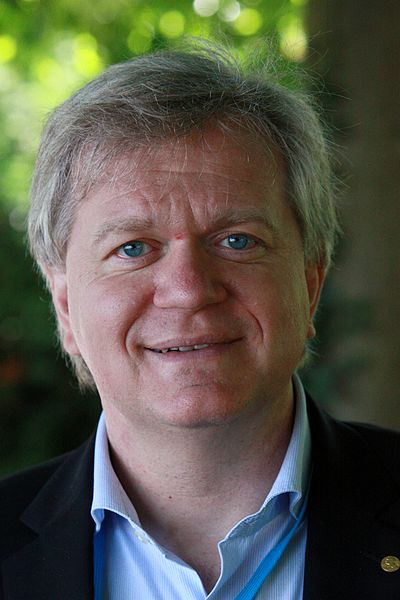When Schmidt found proof of accelerated expansion in the 1990s, he thought he had made a mistake

Until recently, astrophysicists believed that gravity would slow down the expansion of the cosmos. This belief stemmed from the Newtonian understanding of gravity as a force of attraction: the falling apple and planets staying in orbit are standard examples of this. In the late 1990s, however, researchers discovered the repulsive side of gravity. They observed distant supernovae – stellar explosions that briefly shine as brightly as 10 billion suns – and found that they were fainter than what one would have expected based on the Newtonian understanding of gravity. The most plausible explanation for the discrepancy was that the light from the supernovae travelled a greater distance than was predicted, and so the explosions were farther away than presumed. And this explanation, in turn, led to the conclusion that the expansion of the universe is actually accelerating.
The proof and explanation for cosmic acceleration was provided in a Sir CV Raman Lecture held on June 2 at Faculty Hall, IISc, by Brian Paul Schmidt, one of the recipients of the 2011 Nobel Prize in Physics and Vice-Chancellor at Australian National University. Schmidt spoke about how at first, he was in denial about the result of his work (which he arrived at in 1998), and expected no one to accept it; he thought he had made a mistake. “It taught me that science can be a choice between realities,” he said.

At the outset of the talk, Schmidt quickly put into perspective what was known about the universe today, and mentioned that there is so little “actual” matter: atoms make up a mere 5% of the universe! He explained how the universe was very close to being “geometrically flat”. He said, “This is a remarkable and unexpected feature of a universe that is expanding, and much like the accelerating expansion, it is a key feature of our standard model of the universe.” The initial idea of an expanding universe came from Hubble’s data and his ensuing law that relates the distance from a galaxy to the velocity with which it recedes from us. Schmidt pointed out that the idea of a Big Bang followed naturally from an expanding universe – a hot and dense universe 13.8 billion years ago expanded to give rise to the present-day chemical makeup.
“The shape of the universe is tied to the amount of mass in it, and this implies a certain past and future for the universe,” said Schmidt, who then introduced the idea of a “density parameter” associated with the universe, which is the ratio of its actual density to the critical density required to stop the expansion. But what does the universe being nearly flat mean? This is where the density parameter kicks in – if space has no curvature (density parameter is 1), i.e. there is exactly enough mass to cause the expansion to stop, but only after infinite amount of time, then the universe has no bounds and expands forever. Friedmann equations, which determine the shape of the universe and enable modelling of its geometry, were used to calculate the critical density required to keep our universe flat: 5 atoms per cubic metre (but estimates of matter density come to around 0.2 atoms per cubic metre). Although the contents of the early universe may have just been matter, we now must add dark matter to explain the universe’s persistent flatness. We rely on dark (read: unknown) matter to account for the remaining gravitation required so that our universe can sustain its flatness.
Schmidt said that given the meagre relevance of conventional matter to the universe, one might be tempted to question the role of Friedmann equations in cosmology. He was inclined to lean more towards de Sitter’s solution, which models a universe with no matter – its expansion and evolution are attributed to a constant in nature (the cosmological constant). This suggests that the universe naturally stays flat during accelerated expansion. So is it the case that accelerated expansion has little direct influence on the long-term evolution of the universe, or its geometry?
As Schmidt’s talk revealed, the deal is that we really don’t know yet: literally and metaphorically, we’re working in the dark on this.

*Shriya Pai is a fourth-year undergraduate student.




